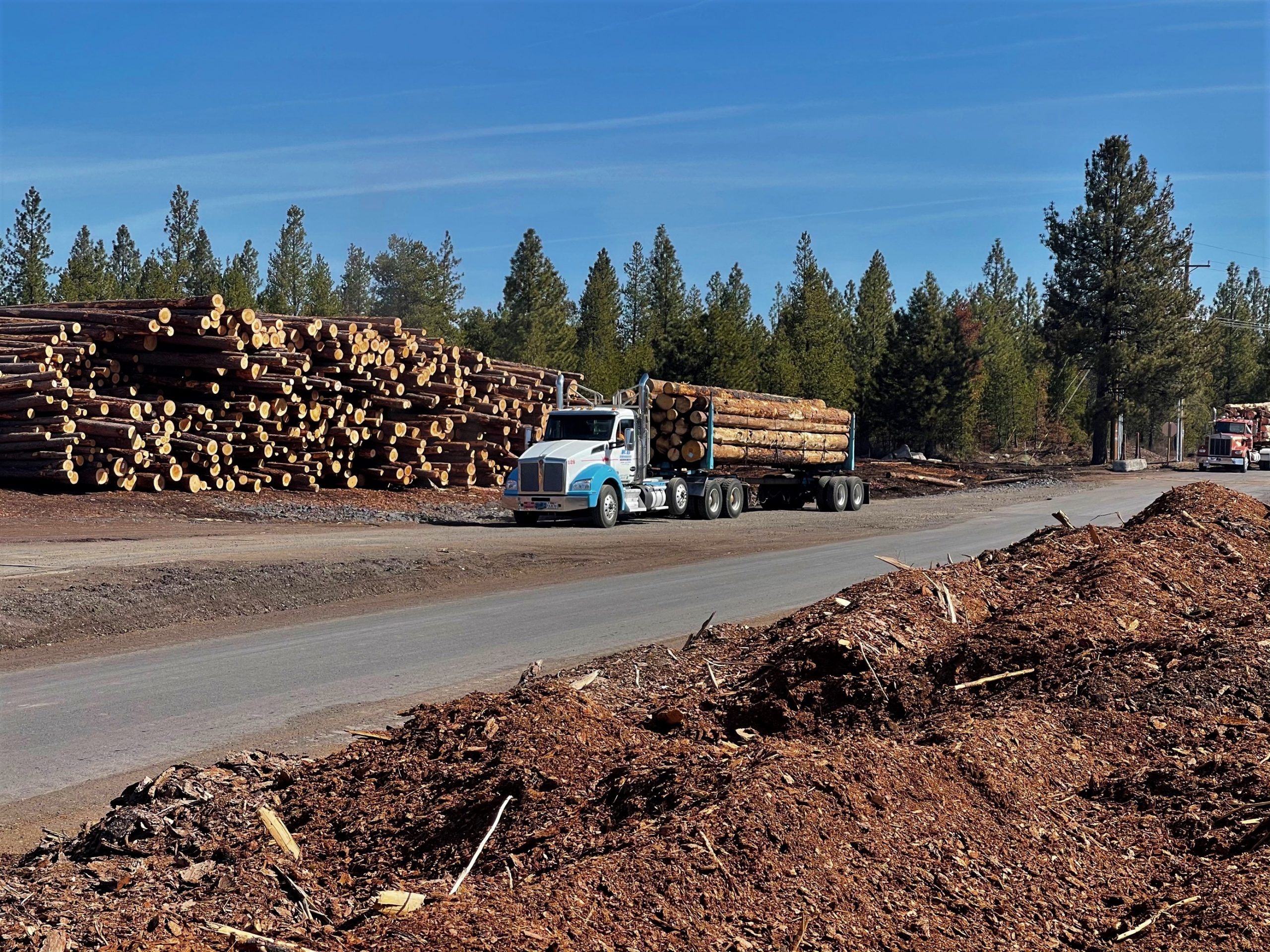Responsible Forest Management: The Role of Debarking in the Timber Transport Pilot
As part of the timber transport pilot program established under the 20-year national master stewardship agreement between the National Wild Turkey Federation and the USDA Forest Service, there is a crucial requirement for harvested trees to undergo debarking and inspection before being transported.
Surplus trees harvested in northern California’s Klamath National Forest are hauled to Oregon's Gilchrist Forest Products, which plays an essential role in maintaining forest health through the debarking process. Debarking involves removing the bark from cut timber, eliminating potentially invasive species and pathogens that can cause damage to forest ecosystems. The debarked logs are inspected and transported to a railyard in Klamath Falls, Oregon, to receive another inspection before being loaded onto railcars for transportation to Wyoming. There, the lumber will help support local sawmills and communities.
“By having multiple sets of eyes on each log through the process, we can monitor that logs are being debarked to the necessary specifications,” said Dan Stone, procurement forester at Gilchrist Forest Products. “Through every step of the process, operators have the ability to reject logs or send them through the debarker again to ensure a quality job has been done.”
When wood is moved, there is a risk that invasive insects and diseases are moved as well, which can introduce new pests or exacerbate existing pest problems. Bark beetles are one of the most prominent invasive species currently affecting forests. These beetles attack and kill healthy trees, causing the dead trees to fall, adversely affecting infrastructure and creating fire hazards. Adult bark beetles tunnel beneath tree bark and disrupt the movement of food and water through the tree, resulting in the tree’s death. Debarking cut timber will expose bark beetles, leading to their death and suppressing the spread of invasive species.
Although forests nationwide are impacted by bark beetles, the western U.S. is especially affected. Among the various species of bark beetles in this region, the mountain pine beetle is the most destructive and aggressive. It targets several species of pine trees, including the ponderosa pine that is being transported for this project. These beetles cause rapid and substantial ecological and economic damage by killing large numbers of healthy trees. The resulting dead trees create a higher risk of wildfires, further endangering the forest ecosystem and nearby communities.
“Insect monitoring stations are also in place in Wyoming to alert us of any activity,” Stone said. “These inspections are additional measures to monitor the success of the pilot program and track the unintentional introduction of pine wood borers or bark beetles that are not native to the Black Hills region.”
Preventing the spread of invasive species between states is crucial to protect the biodiversity of native species. Invasive species can disrupt natural ecosystems, leading to the extinction or decline of native species. This loss of biodiversity can have far-reaching impacts on the entire ecosystem, including the loss of vital ecosystem services such as pollination, water filtration and carbon sequestration.
Through the implementation of debarking and inspection measures, the NWTF and USDA Forest Service demonstrate their commitment to responsible forest management practices that promote the health and sustainability of forest ecosystems. These practices help to protect native tree populations, reduce the risk of wildfires and promote economic growth in the timber industry, all while safeguarding our natural resources for future generations.
Learn more about the timber transport pilot here.
